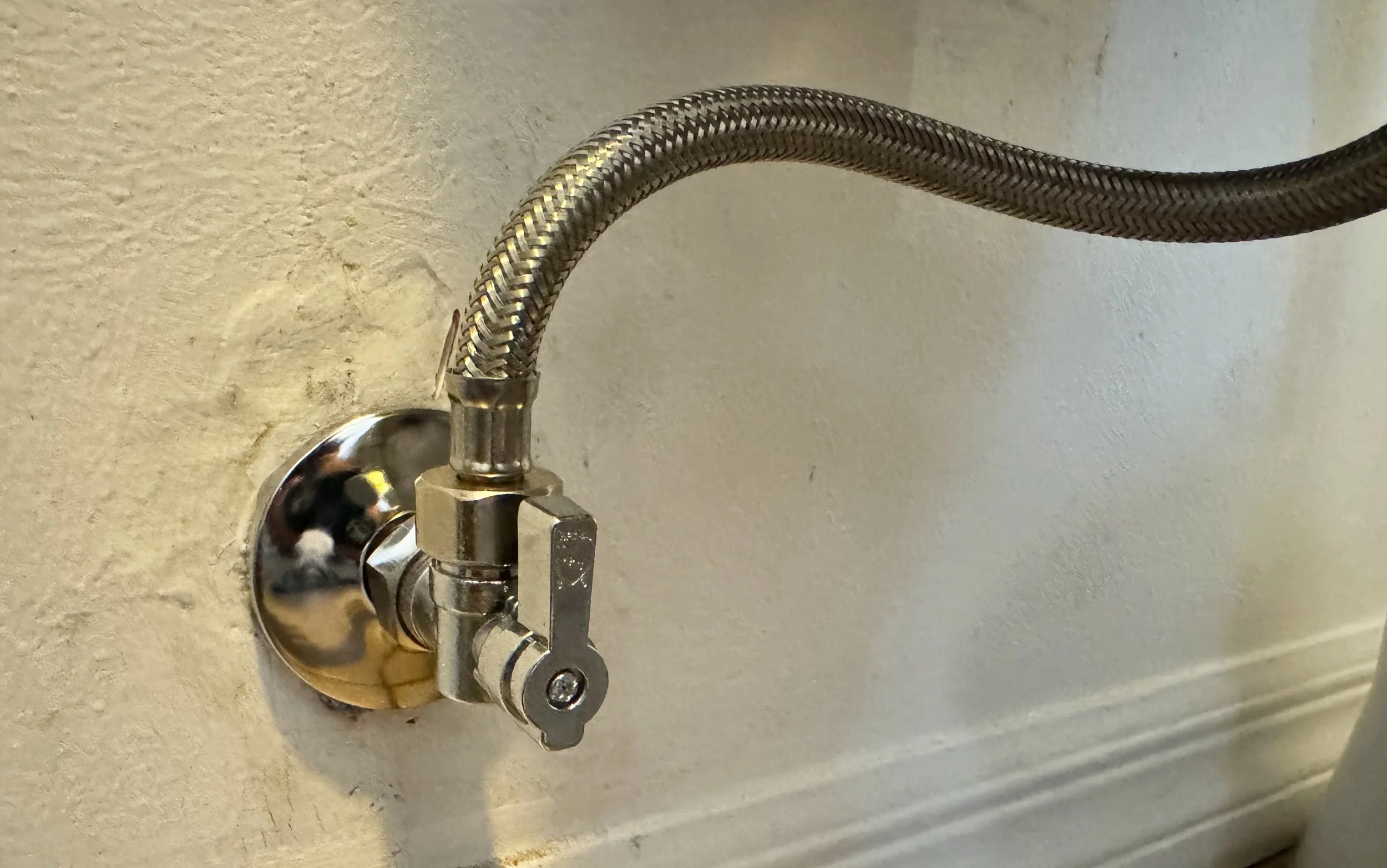Angle Stop Valve Replacements in Pasadena
Angle Stop Valve for Toilet Supply
What Are Angle Stop Valves?
Angle stop valves are an essential component in a home's plumbing system, especially in areas where plumbing fixtures such as sinks, toilets, and washing machines are connected to the water supply. These valves help control the flow of water to individual fixtures, allowing you to shut off the water supply when needed for maintenance or repairs without affecting the entire home's water system.
In simple terms, an angle stop valve is a type of shutoff valve that is used to control the water flow to specific plumbing fixtures. It gets its name from its angular design (typically 90 degrees) and is commonly used under sinks, toilets, or any other fixtures where a water supply line enters at an angle.
How Do Angle Stop Valves Work?
Angle stop valves have two main parts: the valve body and the handle. The valve body connects the water supply line to the fixture’s plumbing, and the handle controls the flow of water. When you turn the handle, the valve opens or closes, regulating or stopping the flow of water to the connected fixture.
The “angle” part comes into play because the valve body connects the pipe at a 90-degree angle. This makes them ideal for locations where the water supply pipe enters the fixture at an angle rather than running straight down. This makes angle stop valves more compact and convenient for tight spaces, especially underneath sinks or behind toilets.
Key Features of Angle Stop Valves
Compact Design
The most distinguishing feature of an angle stop valve is its shape. It typically has a right-angle turn between the water supply pipe and the fixture’s connection. This allows it to fit into smaller or more cramped spaces, like under a sink, where straight-through valves would be difficult or impossible to install.Control of Water Flow
The main function of an angle stop valve is to control the flow of water to a specific fixture. If there’s a leak, if you’re replacing the fixture, or if maintenance is needed, you can use the valve to shut off the water to that individual fixture while leaving the rest of your home's plumbing unaffected.Variety of Connection Types
Angle stop valves come in various configurations, depending on the type of plumbing system in place. Common connection types include compression fittings, threaded connections, and push-fit connections. These fittings allow for easy installation and replacement of plumbing fixtures.Materials
Angle stop valves are typically made of durable materials like brass, chrome, or nickel-plated brass, which can resist corrosion and handle the pressures of household plumbing systems. The material used often depends on the type of plumbing system (copper, PEX, or PVC) and whether the valve is used for hot or cold water.
Where Are Angle Stop Valves Used?
Angle stop valves are most commonly used in the following places:
Under sinks: They control the water flow to faucets or garbage disposals. Under-sink angle stop valves are typically installed between the supply pipe and the faucet to allow for easy shutoff during faucet repair or replacement.
Toilets: They regulate the water flow to the toilet’s tank. Toilet angle stop valves are typically located on the wall behind the toilet, allowing homeowners to turn off the water supply to the toilet without affecting the rest of the house.
Washing Machines: These valves are often used to control water supply to washing machines. The valve allows you to shut off the water supply to the washer in case of leaks or when the machine is being moved or serviced.
Other Fixtures: Angle stop valves are also used in various other plumbing applications, like dishwashers, water coolers, and water filtration systems, wherever a compact shutoff valve is needed.
Why Are Angle Stop Valves Important?
Convenience: Angle stop valves make it much easier to perform repairs or maintenance on plumbing fixtures. If something breaks, like a faucet or a toilet fill valve, you don’t need to shut off the water supply to the whole house. You can simply close the angle stop valve for that specific fixture, saving time and preventing water wastage.
Prevent Water Damage: If a pipe under a sink bursts or a fixture starts leaking, being able to turn off the water supply at the angle stop valve quickly can prevent significant water damage to your home.
Long-Term Maintenance: Over time, angle stop valves may need to be replaced due to wear or corrosion. Having easy access to these valves allows for more straightforward plumbing maintenance and prevents problems from escalating.
How to Use an Angle Stop Valve
Turning Off Water: To shut off the water, simply turn the handle clockwise. This will close the valve and stop the flow of water to the fixture. If you need to open the valve, turn the handle counterclockwise.
Maintenance or Replacement: If you need to replace a faucet, toilet, or another fixture, it's important to close the angle stop valve first to prevent water from spilling out during installation.
Checking for Leaks: After closing the valve, check for any leaks around the valve connection or supply pipe. If you notice a leak, it may indicate that the valve needs to be replaced or tightened.
Potential Issues with Angle Stop Valves
Leaking or Dripping: Over time, the rubber washers inside angle stop valves can wear out, causing small leaks or drips. If this happens, the valve may need to be repaired or replaced.
Sticking Handle: Sometimes the handle can become hard to turn or may stick, especially if the valve hasn’t been used in a long time. This can happen if mineral deposits build up inside the valve. In some cases, lubricating the handle or replacing the valve may be necessary.
Corrosion: If the valve is made of lower-quality materials, or if it’s exposed to high humidity or hard water, corrosion may form, making the valve harder to operate or causing leaks.
Conclusion
Angle stop valves are small but mighty components of a home's plumbing system. They allow you to control water flow to individual fixtures with ease, saving you time and preventing unnecessary water damage during repairs. Their compact design and efficiency make them an ideal choice for tight spaces and essential maintenance tasks. Whether you’re shutting off the water supply to a sink, toilet, or washing machine, these valves make managing your plumbing a lot more convenient and reliable.

